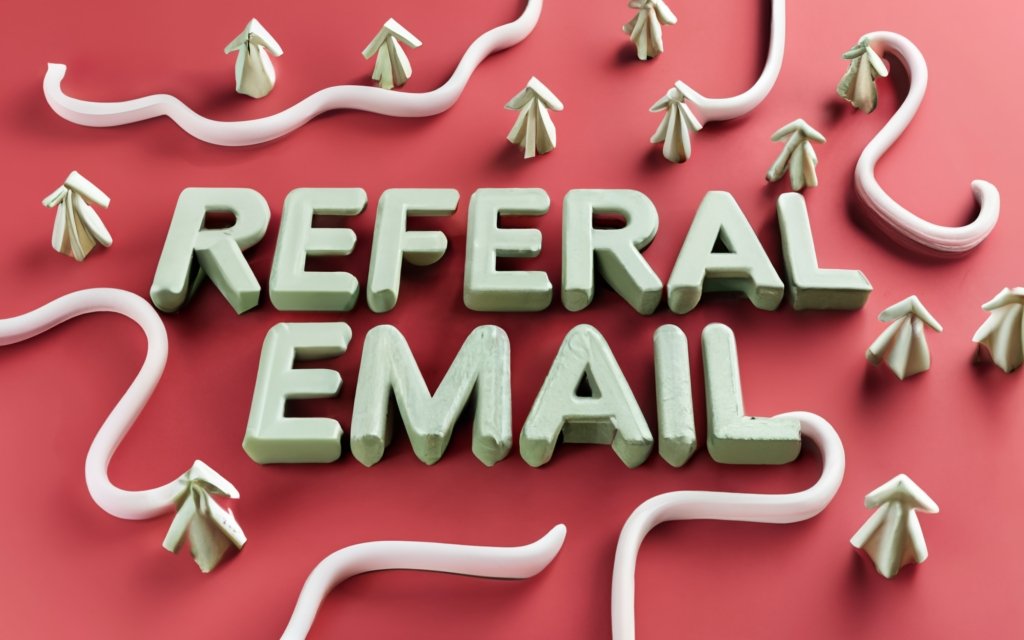Want to amplify word-of-mouth and referrals for your business? Email marketing provides a scalable way to engage customers, drive sharing, and track referral performance. In this comprehensive guide, learn strategies to maximize your email referral program success.
What are Email Marketing Referral Programs and How Do They Work?
Email marketing referral programs are campaigns designed to incentivize existing customers to refer their friends and contacts to a business. These programs encourage organic word-of-mouth promotion, leveraging the power of customer advocates to drive growth.
Definition and Overview of Email Referral Programs
An email referral program typically provides rewards to customers when someone they referred makes a purchase or completes a desired action, like signing up for a free trial. The referral process is facilitated through email – from sharing unique referral links to delivering notifications when rewards are earned.
Here’s a quick overview of how a typical email referral program works:
- A customer joins the referral program, often after making a purchase. They receive a unique referral link to share.
- The company sends periodic referral reminder emails to encourage customers to share their link. These emails may highlight new products, sales, or other incentives.
- When the customer shares their link via email, social media, or text, and a referee makes a qualifying purchase, both parties are rewarded.
- The referral program member receives a reward notification email when someone uses their link. The referee also receives an email confirming their discount or incentive.
- Most programs enable members to check their referral metrics, like number of signups driven, directly within their referral dashboard.
Email is the glue that holds these referral campaigns together, facilitating sharing, tracking, and reward notifications.
How Email Referral Campaigns Drive Growth
There are several ways well-executed email referral marketing programs spur business growth, including:
- Low-cost acquisition: Referrals convert at a high rate, often from warm leads who trust recommendations from friends. The lifetime value from these customers exceeds the referral reward costs.
- Increased evangelism: Email reminders and progress tracking helps keep advocates engaged. Email referral programs extend word-of-mouth promotion.
- Improved retention: Rewards and referral status motivate existing customers to remain loyal and make repeat purchases.
- Enhanced brand perception: The social validation and organic reach of customer referrals boosts brand image.
- Richer customer data: Tracking referral activity provides insights into which customers drive the most conversions.
According to Convince & Convert, referred customers spend an average of 13% more per year than non-referred people. And referral programs cost up to 90% less than traditional advertising.
Key Components of a Referral Email Program
An effective email referral program contains several key ingredients:
- Welcome email – This introduces new members to the program, providing information and unique sharing links to get started.
- Referral reminders – Ongoing emails that encourage referrals, highlight new products or sales, and share program updates.
- Progress dashboard – Enables members to view their referral metrics and reward status at any time.
- Reward notifications – Emails sent when a referral reward is earned, often with redemption details.
- Referee confirmations – Emails to prospects confirming the discount, credit, or incentive they earned from a referral.
- Thank you messages – Follow-up emails showing appreciation to both successful referrers and referees.
- Performance tracking – Advanced programs provide metrics like referral source (email, social, etc), referral conversions, and revenue generated.
That covers the essential ingredients for building an automated and streamlined email referral program. Next we’ll explore strategies for crafting compelling referral emails and welcome messages to engage participants.
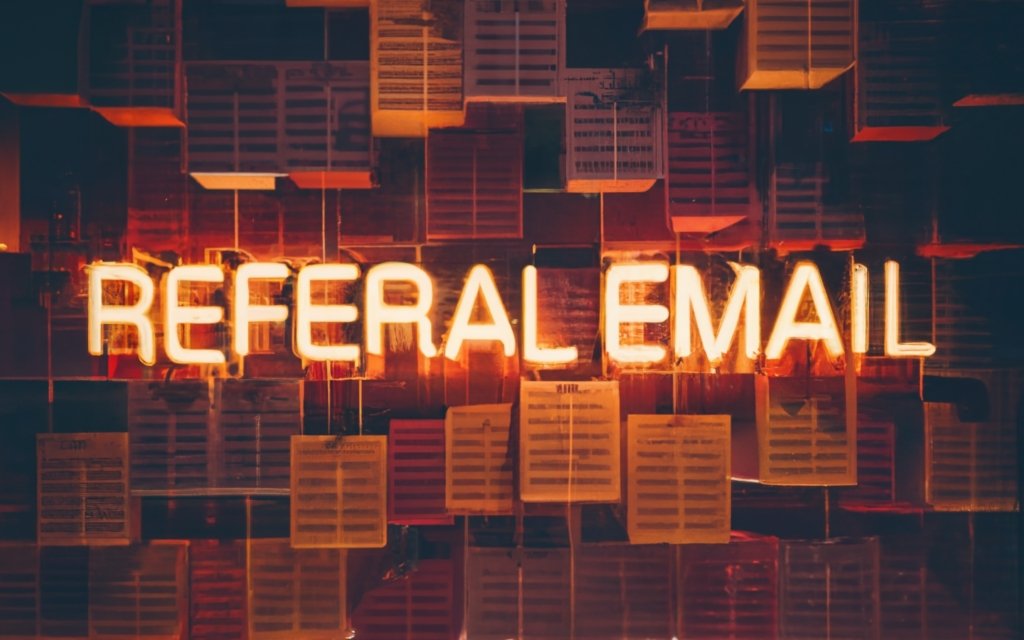
Designing an Effective Welcome Email for New Referral Program Members
The welcome email is one of the most critical touchpoints in your referral program member’s journey. This initial message introduces advocates to the program, provides relevant instructions, and gets them excited to start referring.
Let’s explore some best practices for crafting a compelling and conversion-focused welcome email.
Best Practices for Structuring the Welcome Email
An effective welcome email is concise, personalized, and action-oriented. Here are some key tips:
- Lead with a warm, enthusiastic greeting – Thank them for joining and convey excitement that they’re part of the program.
- Explain the program simply – Use brief, clear language to explain how referrals lead to rewards for all parties.
- Emphasize the benefits – Note any perks of membership, potential earnings, and ways to track progress.
- Provide important links and details upfront – Include their unique referral link, login for their dashboard, and instructions if enrollment isn’t instant.
- Add a strong CTA – Encourage them to get started and make their first referral right away.
- Close with appreciation – End on a grateful, welcoming note and offer support if needed.
Keeping these elements in order drives clarity. Essential info is prioritized over promotional content to increase conversion rates.
Personalization Techniques to Use
Personalizing the welcome email boosts open and click-through rates. Here are some personalization tactics to use:
- Use first name – Greeting them directly with their name builds rapport.
- Reference past purchases – “Thanks for being a customer since (year)” shows appreciation.
- Note their referral source – If they joined after referred by a friend, recognize that.
- Tailor rewards mentioned – If rewards are tiered, note their starting level.
- Customize the CTA – “Get started with your first referral, {Name}” is more direct.
- Segment by demographics – Send version appropriate for their location, age, interests, etc.
Blending just a few personal elements makes members feel recognized as more than just an email address.
Example Welcome Email Templates
Here are examples of effective welcome email templates for different business types:
B2B SaaS Welcome Email
Subject: Welcome to the [Company] Referral Program!
Hi {First Name},
I’m thrilled you have joined our referral program! You now can earn credits towards [Company] subscriptions each time you refer a friend or colleague.
To get started, just share your unique link: {ref_link}
Be sure to check your dashboard periodically to track your referrals and credits earned. Let me know if you have any questions – we’re happy you’re part of the [Company] community!
Refer and earn,
[Sender Name]
Retail Welcome Email
Subject: Get rewarded for referrals, {First Name}!
Welcome to our referral program! Thanks for joining.
Get {reward} for every friend who makes a purchase using your referral link: {ref_link}.
We’ll email you notification every time you earn a reward. Check your member dashboard to watch your referrals stack up!
Refer friends now to earn {reward} in your next order. We appreciate you – enjoy the perks!
Thanks,
The [Company] Team
B2B Services Welcome Email
Subject: Your Referral Program Membership
Hi {First Name},
Thanks for joining our referral program! As a member, you can now earn {reward} for each qualified referral.
Simply share your personal link – {ref_link} – to get credit when a contact becomes a new client.
Referrals are the best compliment we can receive. We appreciate you sharing [Company] with fellow professionals and look forward to rewarding you!
Regards,
[Sender Name]
These examples demonstrate how welcome emails are structured for impact while matching brand voice. With an effective welcome message, you can set members up for referral success.
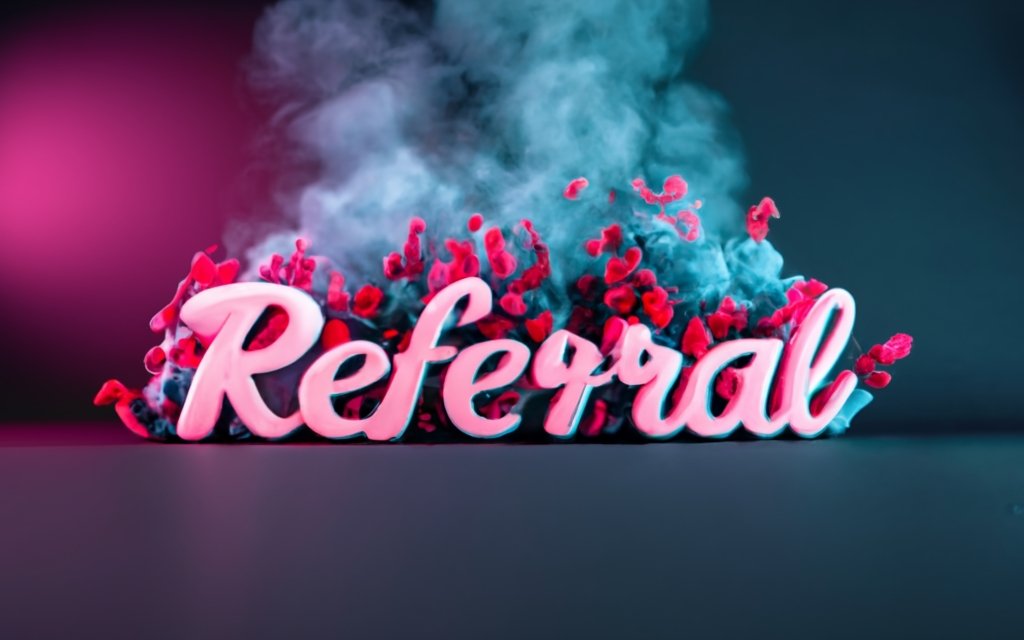
Strategies for Writing Compelling Referral Email Copy
Crafting referral email copy that converts requires understanding your audience and what motivates them. This section covers techniques for writing persuasive subject lines, structuring engaging email body content, and incorporating other proven referral email best practices.
Using Personalized Subject Lines
Personalized subject lines boost open rates by catching the reader’s attention and conveying relevance. Here are some tips for referral email subject line personalization:
- Use first name – “Hey {First Name}, earn bonus credits!” demonstrates familiarity.
- Note mutual connections – “You and Mike could each get $20 credit” highlights social proof.
- Reference recent activity – “Your last 3 referrals scored big rewards!” reminds of progress.
- Include referral specifics – “Confirm your $50 restaurant gift card” conveys value.
- Segment by location – “New LA referral rewards” or “Holiday bonus for NYC members” targets by area.
- Personalize by interests – “New yoga mats to refer friends!” targets their preferences.
- Add exclusivity – “Unlocked: 50% referral bonus this weekend!” suggests scarcity.
Blending personal details with promotions grabs attention while hinting at valuable content.
Structuring the Email Body Copy
Once opened, the email copy must retain the reader’s focus to drive referrals. Use these body copy best practices:
- Highlight recipient benefits – Emphasize what’s in it for them first – the rewards!
- Note new relevant products/sales – Give timely reasons to refer friends now.
- Share success stories – Case studies prove it works and provide social proof.
- Simplify referral steps – Break down how to share their unique link.
- Frame referral as a favor – “Do me a favor and pass this along…” is friendlier than demanding referrals.
- Add visuals of rewards – Depict the discount or gift they’ll earn for traction.
- Incorporate scarcity – Urgency prompts faster action, like limited quantity rewards.
- Make it personal – Use language like “Give your friends the same great experience we gave you!”
Adding Urgency and FOMO
Urgency and FOMO (fear of missing out) can effectively motivate referral actions, but should be used judiciously. Some ways to incorporate them include:
- “Hurry – this 25% referral bonus ends Friday!”
- “Last chance! Your $20 credit expires in 24 hours if unused.”
- “Don’t miss out! Unlock a free gift by referring 3 friends this month.”
- “Double rewards this weekend only! Get your links out now before this promo ends.”
- “Refer 5 friends by the 15th to be entered into our $500 giveaway!”
- “Time’s running out! Earn 50% off your next purchase with 2 referrals.”
The key is to make the deadline or exclusivity clear, but not sound desperate. Limiting these high-pressure emails prevents message fatigue.
Being Authentic and Showing Appreciation
Take an authentic, appreciative tone to build trust and rapport with referrers.
- Thank advocates for being loyal customers and making referrals.
- Be transparent that their referrals truly help grow your business.
- Note you’re grateful for them thinking of you and sharing the brand.
- Assure them the referral rewards are an expression of your appreciation.
- Say you hope their friends love the service/product as much as they do.
- Share success stories of past referrers and client testimonials.
- Wish them well and convey you’re there to support them if needed.
Genuine outreach focused on value, not hard sells, earns goodwill. A little generosity and customer love inspires brand advocacy.
Combine these email copywriting approaches – personalization, structuring for scannability, urgency blended with authenticity – and you have a template for referral message success. Test and refine various versions to determine which resonate most with your audience.
Building an Automated Referral Email Workflow
Setting up a structured referral email workflow optimizes engagement throughout the member lifecycle. Here are some of the key automated emails to include at each stage.
Welcome Message After Signup
We’ve already covered best practices for welcome emails. This automated message introduces new members to the value proposition and provides everything they need to start referring immediately.
Send the welcome email instantly upon sign-up to capitalize on initial excitement. Include their unique referral link, dashboard login, and concise program instructions.
Share Reminders for Existing Members
You need to keep your program top of mind with ongoing reminders to refer. Effective reminder email content includes:
- Progress update – Note their current referral stats and reward status.
- Reasons to refer now – Highlight new arrivals, sales, or other timely hooks.
- Referral tips – Suggest easy ways to share like email, text, social posts.
- Deadline reminders – If rewards expire or are time-limited, remind regularly.
- New member perks – Announce special bonuses, prize contests, or events.
- Customer testimonials – Social proof builds credibility.
Send reminder emails on a set schedule, like bi-weekly. Watch performance metrics to detect message fatigue.
Alerts When Rewards are Earned
Once a member refers someone who completes the conversion activity, promptly notify them of the reward earned.
These notification emails should include:
- Congratulations on earning {reward} for the referral.
- Details on reward delivery – credited to account, mailing timeline, code to redeem, etc.
- Recap of how much they’ve earned to date in the program.
- Reminder to check their dashboard for real-time progress updates.
- Appreciation for the successful referral.
Automating reward alerts fosters an exciting, interactive experience.
Thank You Emails After Successful Referrals
In addition to the reward notification, follow up with a thank you email reaffirming your appreciation. Here are some tips for these messages:
- Call out the member by name and thank them again.
- Share the great feedback provided by their referees.
- Note that the referee also appreciated the discount/incentive.
- Remind them their referrals have significant business impact.
- Suggest other friends who might be interested in referral perks.
- Include a new referral reminder CTA to refer again.
Gratitude increases goodwill and brand sentiment. Thoughtful thank you’s encourage loyalty and future referrals.
Additional Workflows to Automate
Other workflows you could set up include:
- Abandoned referral link sharing – Remind them if they start but don’t send a referral email or message.
- Referral expiration warnings – Give notice before unused credits or rewards expire.
- Win-back emails – Reengage dormant members who have stopped referring.
- Loyalty promotions – Provide special bonuses to consistently high-volume referrers.
Automation allows delivering the right message at the right time based on member behaviors. Map out the journey and scale outreach exponentially.
Tips for Optimizing Referral Email Deliverability
Getting your referral emails reliably delivered to inboxes requires an optimization strategy. Here are some key ways to maximize deliverability.
Warming Up Email Sending Domain and IPs
Warming up your sending domain and IP addresses helps emails bypass spam filters by building a good sender reputation. Consider these warmup best practices:
- Use a dedicated IP – Separate promotional email IPs from transactional ones.
- Perform gradual volume increases – Don’t send mass emails until IP is warmed up.
- Warm up for each domain – Warm up new sending domains before use.
- Send from real addresses – Use real employee addresses instead of no-reply@ addresses.
- Prioritize relevance – Ensure opt-in and send relevant content to subscribers.
- Maintain list hygiene – Prune bounced addresses and unsubscribers.
- Monitor spam complaints – Track feedback loops and remove problem addresses.
- Use double opt-in – Confirm subscriptions to validate engaged recipients.
Tools like Mystrika provide automated expert warming for maximizing deliverability prior to full email sends.
Ensuring Mobile Optimization
With over half of emails opened on mobile, optimization is essential.
- Short subject line – Under 50 characters fits mobile preview panes.
- Prominent CTA buttons – Large buttons are easy to tap on small screens.
- 1 column layout – Stack content vertically for mobile scannability.
- Short paragraphs – Break copy into small chunks.
- Larger fonts – Minimum font size of 14px ensures readability.
- Image compression – Optimize and compress images to reduce file size.
Testing across devices ensures proper rendering and clickability on mobile.
A/B Testing Subject Lines and Content
A/B testing different email components improves open and conversion rates. Elements to test include:
- Subject line phrasing – Emotional vs informational, personalized vs generic, etc.
- Content format – Long form vs short paragraphs, focused text vs visual heavy.
- Calls to action – Different phrases, action verbs, button copy and placement.
- Offers – Discount amount, referral bonus tiers, giveaway prizes.
- Timing – Test sending on different days of week and times of day.
Use split testing to guide email copy optimizations over time.
Analyzing Email Performance Metrics
Dig into analytics to detect opportunities. Key referral email metrics to track:
- Open rate – Monitor over time and optimize subject lines to improve.
- Click-through rate – Which copy and offers drive the most clicks?
- Conversion rate – The percentage of referrals from email clicks.
- Unsubscribe rate – Identify problems triggering opt-outs.
- Bounce rate – Continual bounces signal bad addresses.
- List growth – Ensure your efforts attract more subscribers.
Dashboards in tools like Mystrika allow drilling into the data.
Additional Deliverability Tips
Some other recommendations for optimizing deliverability include:
- Send consistently – Don’t take long gaps between email sends.
- Personalize content – Dynamic content increases relevancy.
- Segment your lists – Customize emails based on user attributes.
- Authenticate your domain – Use SPF, DKIM, and DMARC protocols.
- Check blacklist status – Confirm your IP and domain aren’t on any blacklists.
- Get whitelist certified – Earn certifications from major ISPs.
Driving inbox placement ensures your compelling referral messages reach their intended recipients. Follow best practices and continually refine based on performance.
Driving Referrals with Seasonal and Holiday Email Campaigns
Seasonal and holiday-themed referral email campaigns capitalize on timely events to spur sharing.
Examples of Themed Referral Emails
Here are some examples of seasonal referral emails and the promotional hooks they leverage:
Back to School Referral Emails
- Offer school supply discounts for successful student referrals
- Give referral rewards applicable to college textbooks or tuition
- Highlight your brand’s clothes, electronics, dorm items for the new term
Halloween/Fall Referral Emails
- Provide themed referral bonuses like pumpkin carving kits or haunted house tickets
- Advertise your costumes, candy, and spooky decor for Halloween parties
- Promote fall clothing essentials, cozy home items, and seasonal recipes
Holiday/Winter Referral Emails
- Spotlight gifts and gift cards for holiday shopping and easy referrals
- Offer special referral perks on festive items like Advent calendars or ugly sweaters
- Emphasize decorations, cold weather apparel, and end-of-year sales
New Year Referral Emails
- Reframe the New Year as a chance to refresh and set new referral goals
- Provide referral bonuses usable for New Year’s resolutions – gym memberships, online classes, healthy cookbooks
- Share limited-time incentives as part of New Year sales and promotions
Timing Your Outreach Appropriately
Boost engagement by aligning the deployment of seasonal referral campaigns with key dates:
- Back to school – Mid to late August before school starts. Remind again once classes begin.
- Halloween – Early October ahead of Halloween parties and trick-or-treating.
- Holiday shopping – After Thanksgiving to align with Cyber Week online deals. Continue through Christmas.
- New Year – Early January promotions to incentivize New Year’s resolutions.
Study sales trends to discover the peak periods to maximize the impact of your holiday-themed outreach.
Offering Special Limited-Time Incentives
Limited-time bonuses and contests are great for spurring seasonal sharing:
- Double or triple referral rewards for a short period
- Give limited edition gifts like holiday apparel or decorations
- Run social media giveaways for referrers who share posts
- Award bonus entries into prize raffles for referrals
- Grant early access to special sales or new product launches
- Offer free shipping, gift wrapping, or complimentary gift notes
Communicate the exclusivity of seasonal incentives to create urgency. Banners highlighting “limited time only!” and countdown timers help.
Seasonal Referral Email Ideas
Incorporate relevant occasions year-round:
- Valentine’s Day – Date night packages, couples activities, romantic gifts
- Spring – Outdoor equipment, garden supplies, spring cleaning deals
- Mother’s & Father’s Day – Gifts for parents, family activities, photo books
- Summer – Swimwear, grills, outdoor games, vacation essentials
- Back to School – School supplies, computers, backpacks, college care packages
- Halloween – Costumes, candy, spooky decor
- Holiday Shopping – Gift guides, gift cards, holiday attire and cooking ware
- New Year – Health/wellness items, self-improvement programs
Seasonal hooks keep your referral program fresh, lively, and engaging all year long.
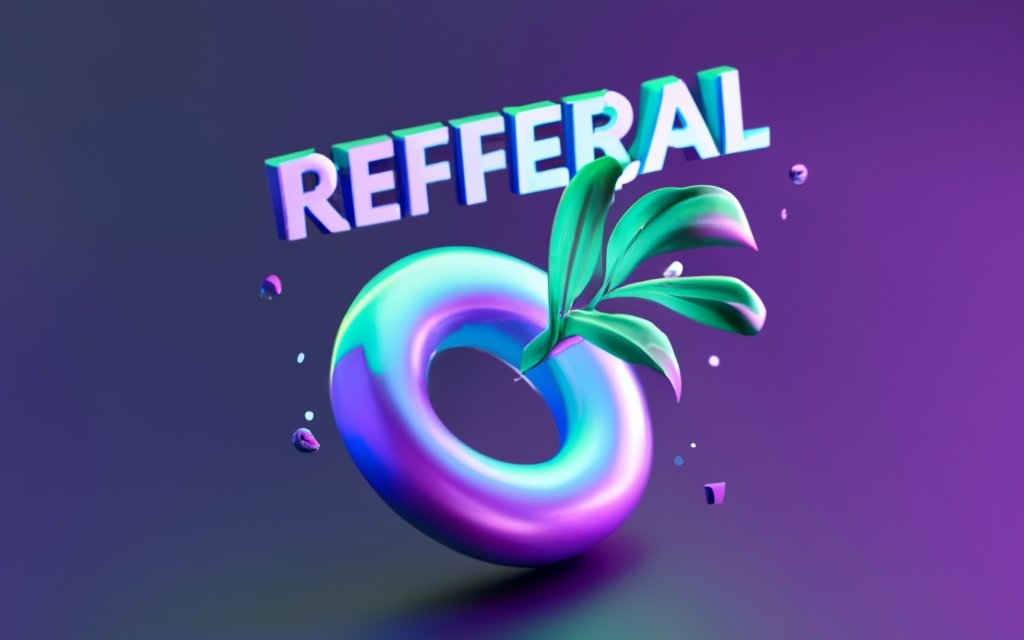
Common Mistakes to Avoid with Referral Emails
While referral emails provide a powerful channel for driving growth, there are some pitfalls to avoid. Let’s review key errors that compromise performance.
Sending to Unsegmented Lists
Too often, referral emails blast every contact instead of tailoring to likely referrers. Avoid these list issues:
- Mass blasting cold leads – Random prospective contacts won’t convert. Only target proven customers and brand advocates primed to share your message.
- Spamming one-time buyers – Occasional low-value purchasers rarely make referrals. Focus on targeting repeat buyers with higher lifetime value.
- Overwhelming unengaged subscribers – Sending too frequently to your entire list leads to frustration. Segment based on activity and interest.
- Forgetting dormant contacts – Re-engage lapsed customers by highlighting new arrivals before asking for referrals again.
Take time to segment your lists based on referral likelihood instead of mass blasting.
Using Overly Promotional Language
Avoid sounding salesy and self-serving in your referral copy. What not to do:
- Talking about yourself – Don’t focus on “we” and how referrals benefit the company. Keep the tone customer-centric.
- Aggressive demands – Phrases like “You have to refer now to claim this reward!” are off-putting.
- Excessive promotional text – Walls of marketing copy are ignored. Balance with helpful educational content.
- Overusing superlatives – Claiming you have the “#1 rated” or “best-in-class” product sounds hypey.
- Too many exclamation points – They suggest desperation and make copy seem salesy when overused.
Take an authentic, consultative tone. Overselling hurts credibility.
Neglecting Personalization
Lack of personalization diminishes engagement. Be sure to:
- Use first names – Avoid just generic “Hi there” greetings. Add personalization to subject lines too.
- Note user attributes – Mention past purchases, interests, demographics, etc. to increase relevancy.
- Customize content – Send targeted product recommendations based on purchase history.
- Tailor incentives – If program levels exist, reference their current status and next reward.
- Localize messaging – Adjust language, offers, and examples based on location.
- Trigger based on behaviors – Send re-engagement emails if they abandon signups or referrals.
Personalized copy outperforms generic bulk email. Treat each subscriber like an individual.
Not Tracking Performance
Referral analytics empower optimization. Be sure to monitor:
- Open and clickthrough rates – Are subject lines and content resonating?
- opt-outs and complaints – Any indications of fatigue or disengagement?
- Conversion rates – What percentage of emails drive referrals?
- Revenue and ROI – Calculate incremental value driven by the program.
- Activity by segment – Assess which subsets of your audience generate the most referrals.
- Trends over time – Watch for declines suggesting creative refresh needs.
Lacking visibility into email effectiveness limits potential. Dive into the data!
Additional Common Missteps
Other referral email pitfalls seen include:
- Forgetting mobile optimization
- Not warming up sending domain and IP addresses
- Failing to confirm opt-in for subscribers
- Neglecting to prune stale email addresses
- Not using an authenticated domain
- Missing anti-spam protocol requirements
Refine and enhance effectiveness by auditing against common missteps and proven best practices. With a savvy approach, referral emails unleash advocacy at scale.
Conclusion and Key Takeaways
Email marketing enables brands to tap into the power of referrals at scale. By automating and optimizing email workflows for referral programs, you can acquire new customers with a low-cost, high-converting channel.
Let’s recap the core strategies covered to maximize your referral email success:
Craft a Compelling Welcome Email
The welcome email sets new referrers up for success. Make it friendly, clear, and action-oriented. Provide key instructions and their unique referral link upfront. Personalize the message and convey appreciation that they joined.
Send Ongoing Referral Reminders
Schedule regular reminder emails to promote referral perks and new products. Add social proof and testimonials. Use seasonal hooks and limited-time incentives to spark urgency.
Automate Referral Workflows
Set up email segments to trigger relevant messages automatically during the referral process. Send reward notifications, thank you’s, and re-engagement streams based on member behaviors.
Write Email Copy That Converts
Use personalized, benefit-focused subject lines. In the body copy, focus on recipient value first. Add scarcity occasionally but maintain an authentic, helpful tone.
Optimize Deliverability
Warm up IP addresses and use authentication protocols. Ensure mobile optimization and list hygiene. A/B test components like subject lines. Analyze performance data.
Tap Into Seasonal Opportunities
Coordinate themed referral promotions around major holidays, school events, sales seasons, and awareness months. Limited-time bonuses can boost response.
Avoid Common Referral Email Pitfalls
Steer clear of mass blasting unsegmented lists, using overly salesy language, neglecting personalization, and failing to track email metrics. Audit against proven best practices.
Final Thoughts
Referral marketing powered by targeted, automated email workflows enables brands to drive conversions at a fraction of the acquisition cost of paid ads.
Just be sure your messaging speaks to the inherent motivation of your best customers – helping friends access an amazing brand experience.
With compelling email content and the right rewards, your top advocates will happily share your message again and again.
So start crafting relevant, personalized referral emails. Then optimize based onopens, clicks, conversions, and ultimately, revenue growth. Leverage this channel and amplify your customer voice.
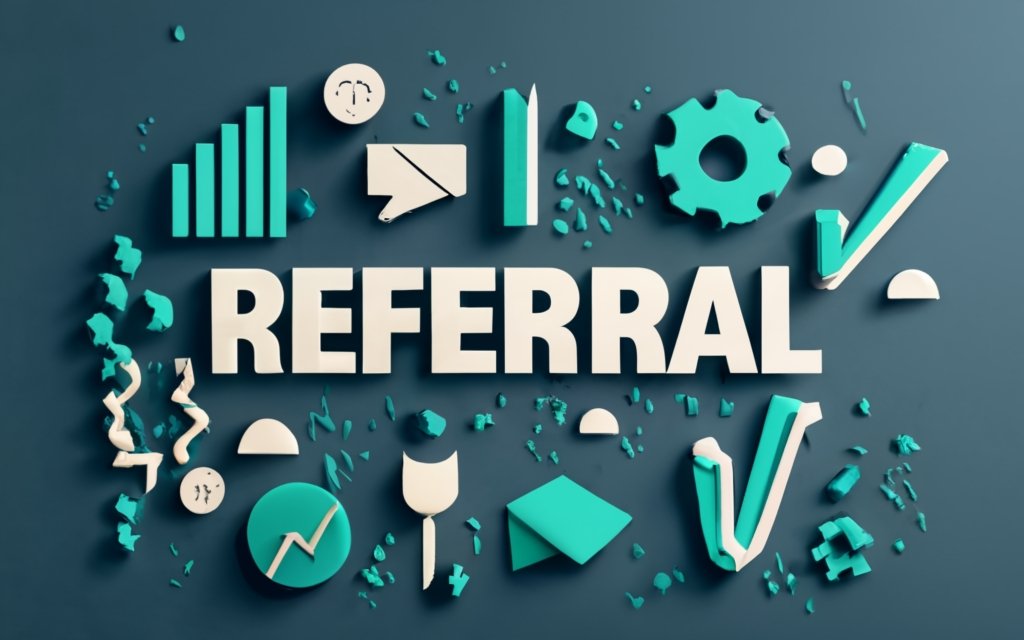
Summary
- Email referral marketing leverages word-of-mouth at scale by incentivizing customers to share with friends and contacts.
- Effective referral emails contain a strong value proposition focused on recipient benefits and use authentic, non-promotional language.
- Personalized and segmented outreach improves campaign performance by targeting the most qualified potential referrers.
- Strategically timed seasonal referral campaigns capitalize on events like holidays and back-to-school to boost response.
- Automating the referral workflow with trigger emails leads to higher engagement throughout the customer lifecycle.
- Optimizing deliverability, testing content, and analyzing data enables continual optimization of email effectiveness.
- Avoid common mistakes like blasting unsegmented lists, using overly salesy language, and neglecting personalization based on customer attributes.
- Well-executed referral email marketing programs provide a proven, cost-efficient customer acquisition strategy that leverages social validation.
- Keep emails concise, clear, mobile-friendly, and focused on making referral participation easy and rewarding for your brand advocates.
Frequently Asked Questions
What are the benefits of referral email marketing?
Referral email marketing enables brands to acquire new customers through word-of-mouth recommendations. It taps into the power of social validation at scale. Referrals convert at higher rates and have higher lifetime value than other acquisition channels.
How should you structure referral email content?
Focus on concise paragraphs, scannable formatting, and clear calls-to-action. Lead with the value proposition and benefits to the recipient. Avoid overly promotional language and be authentic in your tone. Personalize content based on customer attributes and past behaviors.
What metrics should you track for referral emails?
Key metrics to monitor include open rate, clickthrough rate, opt-outs, conversion rate, revenue generated, and activity trends over time. This data enables continual optimization of your campaigns.
How can you improve deliverability of referral emails?
Warm up your IP addresses by gradually increasing sending volume. Authenticate your domain, maintain strict list hygiene, and comply with anti-spam protocols. Ensure mobile optimization and relevance through segmentation and personalization.
What are some common referral email mistakes?
Avoid blasting unsegmented lists, using overly salesy language, neglecting personalization, and failing to track performance data. Also steer clear of subject lines that appear spammy and lack of mobile optimization.
How should you handle GDPR compliance in referral emails?
Honor GDPR by confirming opt-in consent, allowing unsubscribes, and avoiding sending to any addresses that have not given explicit permission. Do not purchase or share lists of contacts without consent.
What referral follow-up streams can you automate?
Set up referral reminder sequences, reward notification emails, win-back messages for dormant referrers, and re-engagement emails when they abandon referrals mid-process. Automate relevant drip campaigns.

